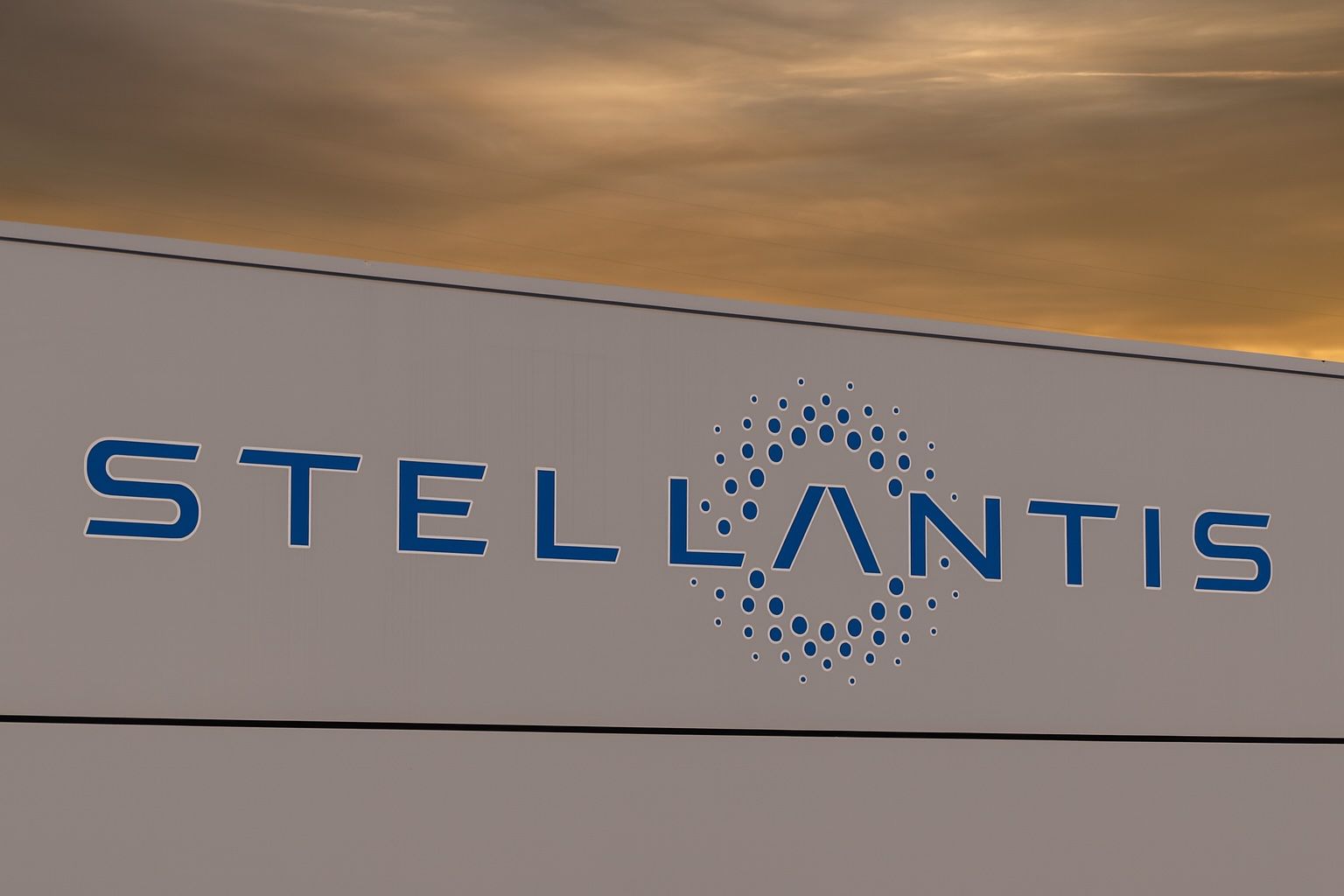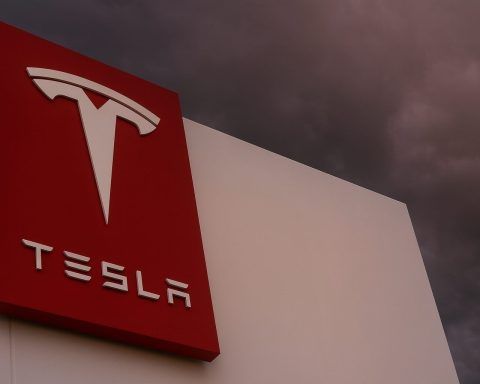- Stellantis Stock Volatility: Stellantis N.V. (NYSE: STLA) shares hovered near $10 on Oct. 15, 2025, after a rollercoaster week. The stock plunged over 4% on Oct. 14 when Moody’s cut its outlook to negative, then spiked about 4% in after-hours trading as the company unveiled a record U.S. investment plan [1] [2]. Even with the rebound, STLA remains down roughly 33% year-to-date [3].
- Record $13B U.S. Investment: The automaker announced a $13 billion investment in its U.S. manufacturing – the largest in Stellantis’ history – to launch five new models and add 5,000 jobs across Midwest factories over the next four years [4] [5]. This includes reopening the Belvidere, Illinois plant (shuttered in 2023) to build new Jeep SUVs, creating ~3,300 jobs [6] [7]. Stellantis’ new CEO Antonio Filosa called it a strategic move to “regain sales momentum” in this critical market [8]. U.S.-listed Stellantis shares initially jumped ~4% on the news [9].
- Credit Outlook Cut:Moody’s changed Stellantis’ credit ratings outlook to “negative” on Oct. 13, citing weak operating performance and sliding market share as dealerships cut inventories and demand dipped [10]. The agency flagged delays in new product launches, challenging conditions in Europe, and the profit drag of U.S. import tariffs as key risks [11]. Moody’s maintained Stellantis’ investment-grade rating (Baa2) for now, noting the firm’s still-solid liquidity and global scale [12].
- Strategy on Hold: Stellantis delayed the launch of its new strategic plan to Q2 2026 (originally Q1) to give CEO Filosa more time to navigate “critical exogenous factors” [13]. The company told analysts it needs to address U.S. trade barriers – over 40% of Stellantis’ U.S. sales are imported vehicles facing 25% tariffs [14] – and await clarity on EU emissions rules under review [15]. Filosa has already shaken up top management and vowed fresh vehicle launches to reconnect with customers after a dismal 2024. The postponement underscores the regulatory and market hurdles the new CEO faces [16] [17].
- Sales Rebound Signs: Early indicators show Stellantis’ sales bouncing back. Q3 global vehicle shipments jumped ~13% year-on-year to 1.3 million units – the first rise after six consecutive quarterly declines [18]. North America led the comeback with a 35% surge in shipments (to 403,000 vehicles) as new launches like the V8 Ram 1500 pickup and normalized inventories boosted U.S. demand [19] [20]. European deliveries rose 8% on four new compact models (e.g. Citroën C3 and Opel Frontera) despite soft spots in vans and certain markets [21]. Stellantis stock briefly rallied 6–8% earlier in October on robust U.S. sales data [22], though recent strategic jitters erased those gains.
- Analyst Reactions Split:Wall Street’s take is mixed. TD Cowen analysts say the timing of the $13B U.S. investment signals greater “tariff comfort” from Stellantis’ management, providing a path to mitigate trade costs and spur growth [23]. UAW President Shawn Fain lauded the move, claiming it “proves that targeted auto tariffs can bring back thousands of good union jobs” to America [24]. However, others urge caution: Barclays noted it “seems premature to fully re-engage” with Stellantis stock until there’s clearer visibility into its earnings and free cash flow trajectory [25]. The automaker’s adjusted operating income and cash generation remain under pressure, keeping some analysts on the sidelines [26].
Stellantis Stock on a Wild Ride (Oct. 15, 2025)
Stellantis investors have been on a nerve-testing ride this week. As of October 15, the Chrysler-Jeep-Peugeot parent’s stock was trading around the $10 mark – but that headline number belies big swings in recent sessions. Just a day earlier, STLA tumbled over 4% during Tuesday’s session after Moody’s dimmed its credit outlook for the company [27]. Then, in a dramatic about-face, Stellantis shares jumped roughly 4% in post-market trading Tuesday evening as the company dropped a bombshell announcement: a $13 billion plan to expand in the United States [28]. The stock’s whipsaw reflects the push-pull of bad news and good news now swirling around Stellantis, which by Tuesday’s close was still down a bruising ~33% for 2025 to date [29].
What’s driving the volatility? In short, a tug-of-war between credit worries and growth hopes. On one hand, Stellantis has been grappling with serious challenges – which Moody’s outlined bluntly in its report. The ratings agency cited “weak operating performance” and uncertainty about the recovery of profitability and free cash flow at Stellantis [30]. It pointed to slumping market share since 2024 (dealers have been trimming bloated inventories and consumer demand for some models softened) and noted Stellantis “experienced delays” in rolling out new products that could lift sales [31]. Add in tough conditions in Europe and the impact of U.S. import tariffs, and it’s clear why Moody’s grew more pessimistic [32]. The automaker depends heavily on imports for its U.S. business – over 40% of vehicles Stellantis sells in America are built in Mexico or Canada and hit with a 25% tariff under recent trade policies [33]. All these factors have been squeezing margins and clouding the earnings outlook.
Crucially, Moody’s did not slash Stellantis’ actual credit rating (still a solid Baa2 investment-grade) [34]. The firm has ample liquidity and global scale to weather turbulence for now [35]. But the “negative” outlook serves as a clear warning: unless Stellantis can right the ship – boosting its sales, shoring up profits, and managing trade headwinds – an actual downgrade could loom. News of that outlook change hammered the stock on Monday and into Tuesday, as investors hate hearing about potential credit troubles at a company already navigating a rocky turnaround.
Enter the good news: Stellantis’ bold $13 billion U.S. investment play. Late on Oct. 14, the automaker’s new CEO Antonio Filosa effectively answered those doubts with a bet-the-house style strategy for its most critical market. The company announced plans to pour $13B into its American manufacturing footprint, calling it the largest single investment in Stellantis’ history [36]. The goal? Supercharge its U.S. growth by building five new models and dramatically expanding factory capacity in Illinois, Michigan, Ohio and Indiana [37]. Over the next four years, 5,000 new U.S. jobs will be created under this plan, including reopening the long-idled Belvidere, Illinois assembly plant (mothballed since early 2023) [38] [39]. That facility alone will hire back about 3,300 workers to start churning out two new Jeep models by 2027 [40] – a victory for the UAW union, which had battled to save the plant. “Their decision today proves that targeted auto tariffs can, in fact, bring back thousands of good union jobs to the U.S.,” crowed UAW President Shawn Fain in response to Stellantis’ announcement [41].
From Stellantis management’s perspective, this massive expenditure is about regaining lost ground in America. “Accelerating growth in the U.S. has been a top priority since my first day,” CEO Filosa said, noting that success in the U.S. “makes us stronger everywhere” globally [42]. He told Reuters that the $13B commitment is “the largest in the automaker’s history” and should help buffer the company against U.S. President Donald Trump’s import tariffs, which otherwise would cost Stellantis an estimated $1.7B this year [43]. “Tariffs are getting clearer and clearer… just another variable of our business equation that we need to be ready to manage, and we will,” Filosa said confidently [44]. In other words, Stellantis is throwing money at the problem – localizing production of key vehicles – so it can dodge those hefty tariffs and better compete on price in the States.
Wall Street appeared to cheer the move, at least initially. Stellantis’ stock popped in extended trading once news of the U.S. expansion hit, and Milan-listed shares surged as much as 4.3% Wednesday morning on the announcement [45]. Analysts at TD Cowen took the investment as an encouraging sign, commenting that the timing “possibly signals greater tariff comfort/clarity” on management’s part [46]. In their view, Stellantis choosing to pull the trigger on this plan now suggests the company is more confident it can handle – or that it expects relief from – the tariff costs that have been plaguing it [47]. The new U.S. projects not only mitigate the trade hit but also open “new growth opportunities,” TD Cowen noted, by updating Stellantis’ product lineup and boosting capacity in its biggest market [48].
However, the investment announcement also raised some eyebrows. Notably – and somewhat surprisingly – this $13B splash is not centered on electric vehicles (EVs). Unlike many recent auto industry investments, Stellantis’ plan devotes relatively little to pure electrification. In fact, TechCrunch pointed out that “this one doesn’t focus on electrification”: of the five new models promised, only one will be a range-extended EV (an EV with a gas generator for extra range) slated for 2028 production [49]. The rest include a new gas-powered SUV and next-generation traditional models like the Dodge Durango and a midsize truck, plus a new four-cylinder engine plant in Indiana [50]. In the past year Stellantis has actually scaled back some U.S. EV plans – recently nixing an electric Jeep Gladiator and canceling a full-size RAM EV pickup program [51] – reflecting caution about EV demand or profitability in the near term. Filosa’s big bet, then, is a bit more old-school: invest in combustion and hybrid models that are selling well now (like Jeep SUVs and RAM trucks) to rebuild U.S. market share and profits, rather than gambling it all on a rapid EV ramp-up. This strategy may prove wise if American consumers remain price-sensitive and if EV tax credits continue to flux. (Indeed, to keep its EVs moving after a federal $7,500 tax credit expired on Sept. 30, Stellantis quietly began offering equivalent rebates on eligible Jeep, Dodge, Chrysler and Alfa Romeo plug-in models in inventory [52] [53].)
Major Hurdles: Strategy Delays and Profit Pressure
Despite the optimism around new investments, Stellantis’ leadership is clearly cognizant of the major hurdles ahead. In an analyst call late last week, executives revealed they are postponing the company’s much-anticipated strategic plan rollout to the second quarter of 2026 [54] [55]. Originally, the new CEO’s grand gameplan was expected in Q1, but Filosa is tapping the brakes. Why? The automaker wants more time to address big unknowns in its two core markets – the U.S. and Europe – before cementing a long-term strategy [56].
On the U.S. side, the delay makes sense: the trade picture has been in flux with shifting tariff policies. Stellantis, more than other Detroit “Big Three” rivals, has a huge exposure to import tariffs given its reliance on Mexican and Canadian plants for many Jeep and RAM models [57]. Filosa warned back in July that new U.S. tariffs could hit the company with a €1.5 billion (~$1.7B) cost in 2025 [58]. That threat alone could throw off profit forecasts, so management is waiting to see if relief or exemptions materialize. “We had initially indicated Q1 2026, [but] it would now be more accurate to say H1 2026,” Stellantis’ investor relations head told analysts, explaining that extra time will help the company factor in “critical exogenous factors” like U.S. tariffs and the intense lobbying underway in Washington [59] [60]. In short, Stellantis is playing for time, hoping the tariff situation becomes clearer – or perhaps that trade negotiations ease the burden – before they lock in multi-year plans. (The hefty U.S. investment announced this week certainly aligns with a strategy to localize production and blunt those import duties.)
In Europe, regulatory uncertainty is another reason for the strategic pause. The EU is currently reviewing its landmark 2035 zero-emission vehicle mandate (which would effectively ban new gas/diesel car sales by 2035) [61]. The outcome is expected by year-end. For an automaker balancing a mix of EV and combustion vehicle development, a lot rides on how strict or flexible that rule will be. Filosa doesn’t want to over-commit to one technology path until he knows the European regulatory goalposts [62]. Also, Stellantis has been contending with changing emissions and EV battery rules (and even an EU probe into Chinese EV import pricing). All these moving pieces mean it’s prudent to delay the strategic blueprint a few months. As one industry commentator put it, Stellantis is “pressing pause” on its next big strategy reveal to avoid making promises it might have to revise amid shifting trade and policy winds [63].
For investors, the strategy delay was a bit of a red flag – it contributed to Stellantis’ stock selloff last Friday (when shares sank 7% in Milan) [64]. Barclays analysts noted that the market’s knee-jerk drop showed “another nervous reaction… on limited new news”, reflecting fragile sentiment [65]. Still, Barclays and others see why caution is warranted. The broker wrote this week that there has been “strongly increasing investor interest” in Stellantis lately thanks to some positive signs (like improving U.S. market share in September and better order momentum) [66]. However, they warned against jumping in too fast, writing “we think it still seems premature to fully re-engage” with Stellantis stock “while [profit] visibility remain limited” [67]. In plainer terms: yes, shipments are picking up and management is making bold moves, but the company has yet to prove it can translate those into sustained earnings and cash flow growth. The new executive team is executing a “significant strategic pivot” – essentially reinventing Stellantis’ U.S. gameplan – and until we see results, it’s wise to be somewhat cautious [68].
Looking Ahead: Cautious Optimism for a Turnaround?
So where does Stellantis go from here? The narrative for this €45-billion-market-cap automaker (pre-slump) is now at a crossroads of promise and peril. On the promising side, there are tangible green shoots: sales are rebounding (Q3 deliveries jumped by double digits globally, led by a U.S. resurgence) [69] [70], and new leadership is taking action (with bold investments and management shake-ups to reignite growth). Filosa’s team has demonstrated they’re not afraid to spend money to solve problems – the $13B U.S. plan addresses the tariff issue head-on and aims to recapture American consumers with fresh models. Notably, Stellantis has already begun re-introducing popular vehicles like the Jeep Cherokee SUV and 8-cylinder Ram 1500 truck to showrooms [71], after prior leadership had discontinued or scaled them back. Those moves, combined with healthier dealer inventories now, seem to be paying off: North American shipments had declined for six straight quarters until this summer, but in Q3 they surged 35% – a remarkable turnaround that suggests pent-up demand for the right products [72]. Even in Europe, Stellantis managed growth (+8% shipments) by rolling out new compact cars in key segments [73]. These trends hint that the worst of the sales slump may be over.
On the perilous side, plenty of challenges remain. Stellantis is still playing catch-up in electric vehicles versus rivals, especially in the U.S. where it lagged in EV offerings – and its decision to prioritize combustion and hybrid models (like a new gas SUV and four-cylinder engine production) could be risky if consumer preferences or regulations shift faster toward EVs. The company also faces profitability pressure from multiple fronts. It warned that U.S. tariffs alone could shave $1.7B off its 2025 profits [74] – and while the new investment mitigates that in the long run, in the short run $13B of spending is, well, $13B of spending. That will weigh on free cash flow and require returns on those projects down the line. Additionally, Stellantis has to contend with rising costs (from battery materials to labor contracts) and intense competition in Europe and North America. The fact that Moody’s felt compelled to caution about Stellantis’ “free cash flow generation” recovering [75] shows there’s skepticism about how quickly margins can bounce back even if sales improve.
Investors will get a near-term checkup on Stellantis’ financial health at the end of this month: the company is scheduled to report its full third-quarter 2025 shipments and revenues on October 30 [76]. Analysts will be dissecting that release for clues on whether the volume gains are translating to better revenue and whether cost controls (or lack thereof) are evident. Any updated commentary from Filosa then – perhaps more color on the U.S. investment timing or early Q4 trends – could also sway the market’s view.
For now, the mood around Stellantis is one of cautious optimism. The stock’s recent gyrations underscore that every silver lining (e.g. strong sales, big investments) seems to come with a cloud (credit warnings, strategic delays). But the company’s bold course-correction in the U.S. and its improving sales figures suggest a turnaround might be taking hold. “Success in America is not just good for Stellantis in the U.S. – it makes us stronger everywhere,” CEO Filosa said this week [77], framing the U.S. expansion as a linchpin for the automaker’s global fortunes. If he’s right, and Stellantis can execute on its plans — getting new Jeeps and trucks to market, avoiding the tariff landmines, and beefing up its profitability — then the darkest days of 2024 could indeed be in the rearview mirror. Still, the road ahead has bumps, and investors will be watching closely to see if this transatlantic auto giant can truly shift into a higher gear.
Sources: Reuters [78] [79] [80] [81]; TechCrunch [82] [83]; ts²/TechStock² News [84]; Car and Driver [85]; TradingView/Refinitiv [86] [87].
References
1. www.tradingview.com, 2. www.reuters.com, 3. www.tradingview.com, 4. www.reuters.com, 5. www.reuters.com, 6. www.reuters.com, 7. www.reuters.com, 8. www.reuters.com, 9. www.reuters.com, 10. www.reuters.com, 11. www.reuters.com, 12. www.reuters.com, 13. www.reuters.com, 14. www.reuters.com, 15. www.reuters.com, 16. www.reuters.com, 17. www.reuters.com, 18. www.reuters.com, 19. www.reuters.com, 20. www.reuters.com, 21. www.reuters.com, 22. ts2.tech, 23. www.tradingview.com, 24. www.reuters.com, 25. www.reuters.com, 26. www.reuters.com, 27. www.tradingview.com, 28. www.reuters.com, 29. www.tradingview.com, 30. www.reuters.com, 31. www.reuters.com, 32. www.reuters.com, 33. www.reuters.com, 34. www.reuters.com, 35. www.reuters.com, 36. www.tradingview.com, 37. techcrunch.com, 38. www.reuters.com, 39. www.reuters.com, 40. www.reuters.com, 41. www.reuters.com, 42. techcrunch.com, 43. www.reuters.com, 44. www.reuters.com, 45. www.tradingview.com, 46. www.tradingview.com, 47. www.tradingview.com, 48. www.tradingview.com, 49. techcrunch.com, 50. techcrunch.com, 51. techcrunch.com, 52. www.caranddriver.com, 53. www.caranddriver.com, 54. www.reuters.com, 55. www.reuters.com, 56. www.reuters.com, 57. www.reuters.com, 58. www.reuters.com, 59. www.reuters.com, 60. www.reuters.com, 61. www.reuters.com, 62. www.reuters.com, 63. www.facebook.com, 64. www.reuters.com, 65. www.reuters.com, 66. www.reuters.com, 67. www.reuters.com, 68. www.reuters.com, 69. www.reuters.com, 70. www.reuters.com, 71. www.reuters.com, 72. www.reuters.com, 73. www.reuters.com, 74. www.reuters.com, 75. www.reuters.com, 76. www.reuters.com, 77. techcrunch.com, 78. www.reuters.com, 79. www.reuters.com, 80. www.reuters.com, 81. www.reuters.com, 82. techcrunch.com, 83. techcrunch.com, 84. ts2.tech, 85. www.caranddriver.com, 86. www.tradingview.com, 87. www.tradingview.com








